Keep Your Notion Databases Current with No-code Automations
Keep your Notion databases up to date without having to lift a finger. Just set up a simple scenario in Make to update specific database items. We'll show you how it works in this quick tutorial.
November 9, 2022

Keeping a database up to date can be a tedious task, and missing or out-of-date entries can make the database less useful to your team as a source of truth.
In this quick tutorial, we’ll show you how to use Make (formerly Integromat) to automatically update existing database records. With an automated workflow like this, you can ensure that your databases stay current without having to add extra tasks to your workload.
Updating a Notion Database item
In our example scenario, we’re going to automatically update our “Clients” database record every time that there’s a new meeting notes doc created for them in the “Meeting Notes” database.

The module pictured below watches the “Meeting Notes” database for new entries.
You can check out our previous tutorial here for more information about setting up these “Watch database items” modules.

Providing an ID for Your Database
Next, we’ll add an “Update Database item” module.

In the “Database item” field, we need to provide the ID of the parent database that the item is stored in.
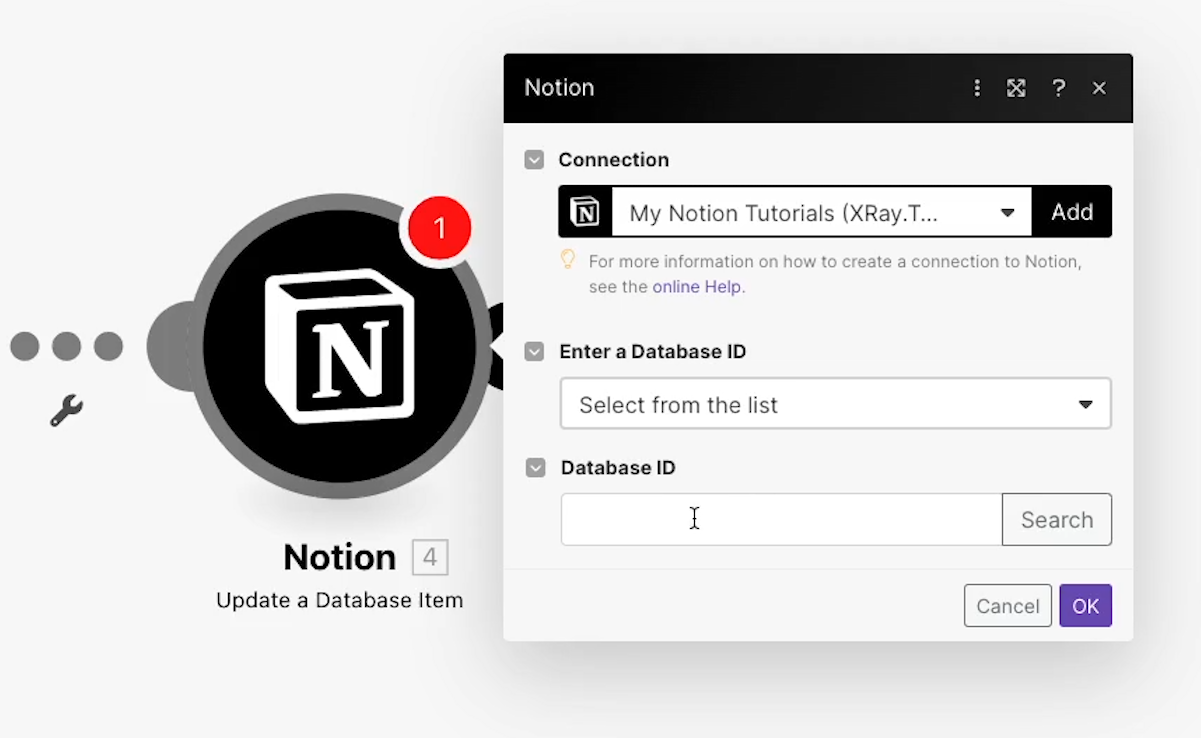
Whenever you need to provide the ID of a Notion Database or Database item in Make, you have a couple of options.
You can either enter the ID as a static value, or you can retrieve a dynamic ID from a previous module.
The approach you choose will depend entirely on the context of your automation. If you always want to update the same database item with your automation, then it’s fine to just copy and paste the ID directly from the URL bar.
If you want the automation to update different database items, then you’ll need to make sure you can dynamically retrieve that ID in a module before you can use it.
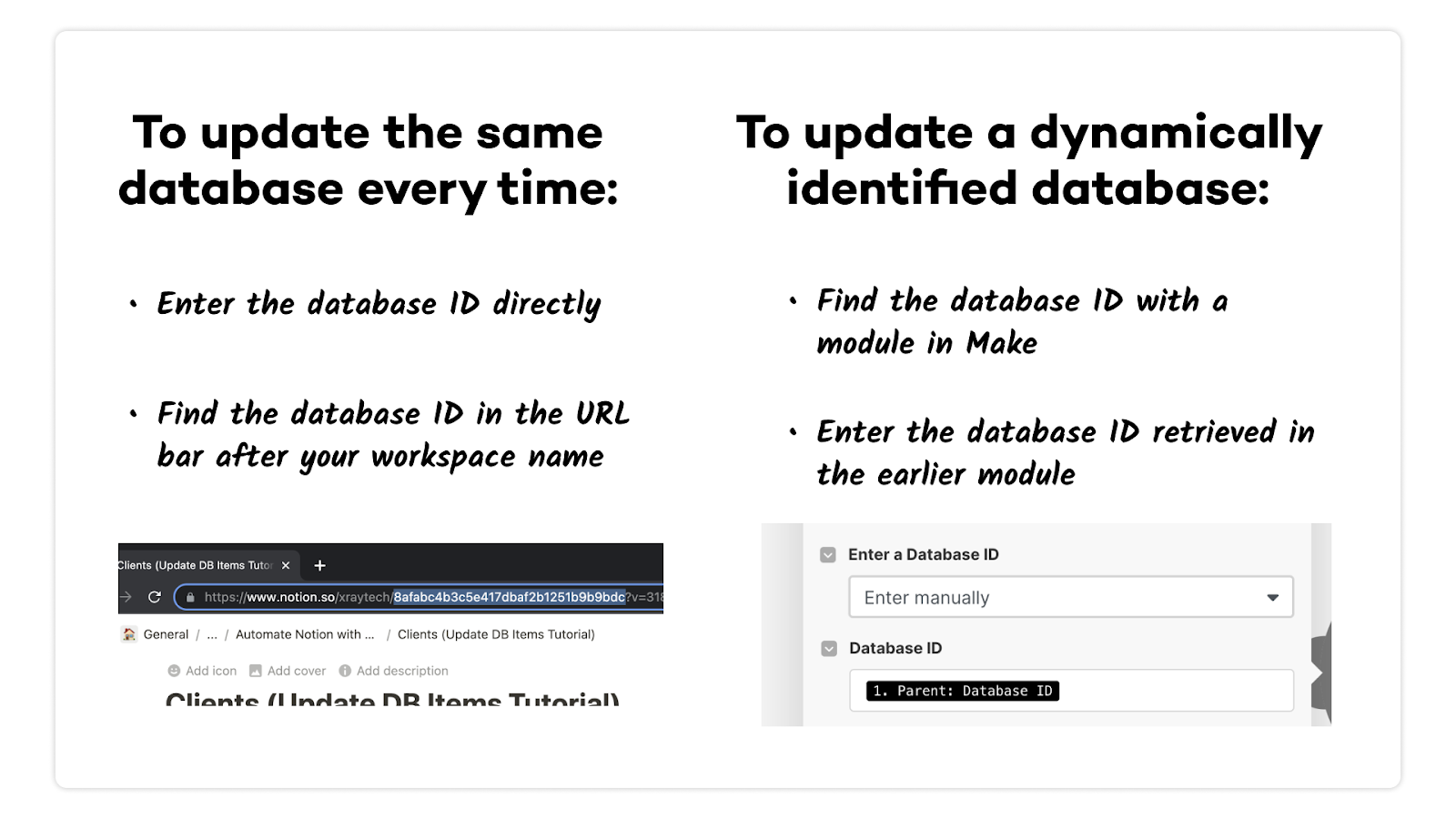
Using the “Watch database items” module along with a filter can be a great way to do that, and we’ve covered that module in a previous tutorial.
In our example, our automation will only run for “FakeCo” in the client directory. To do that, we’ll add a filter after we finish setting up this second module.
In our example, since we’ll be updating the same database item, we’ll just enter it as a static value.
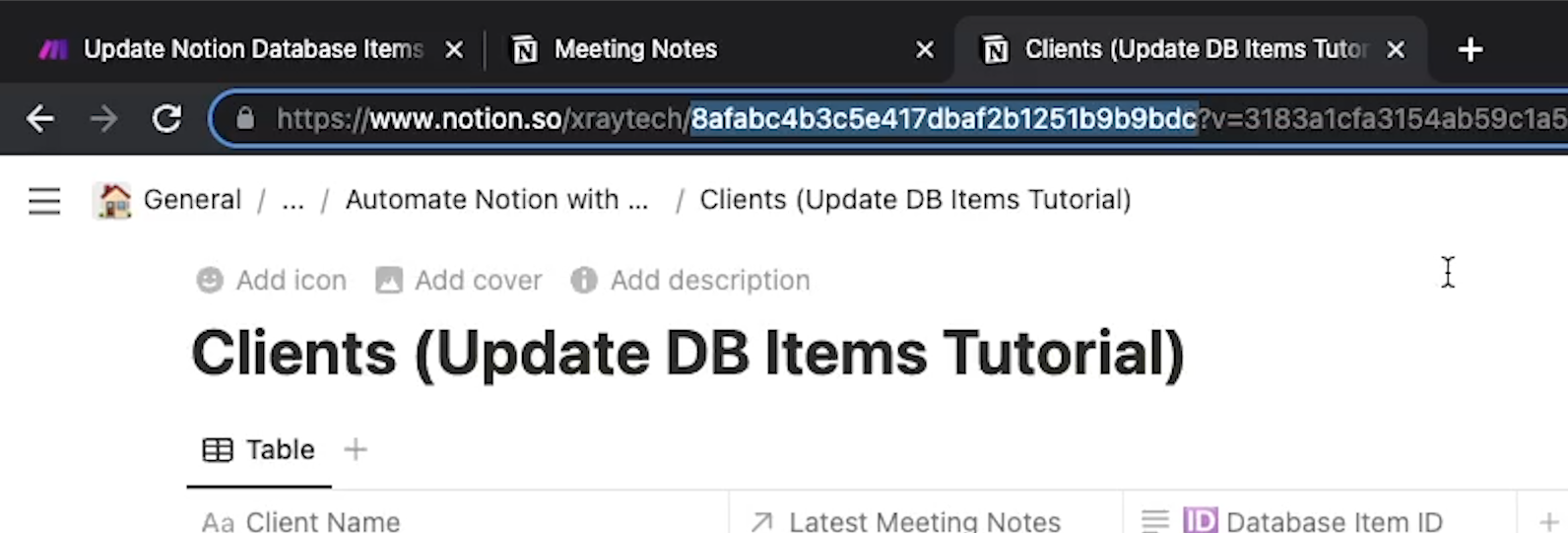
You can find the ID by opening the database in Notion, and copying the string of text between your workspace name and question mark V. If you don’t have a workspace, the ID will start after Notion.so/
Providing an ID for the Database Item
Then, enter the ID of the specific database item you want to update. Just open the item as a page in Notion, and select the characters after the last hyphen in your record’s name.

Once you paste that ID into your Notion module, you can start filling in every property in that database as needed.
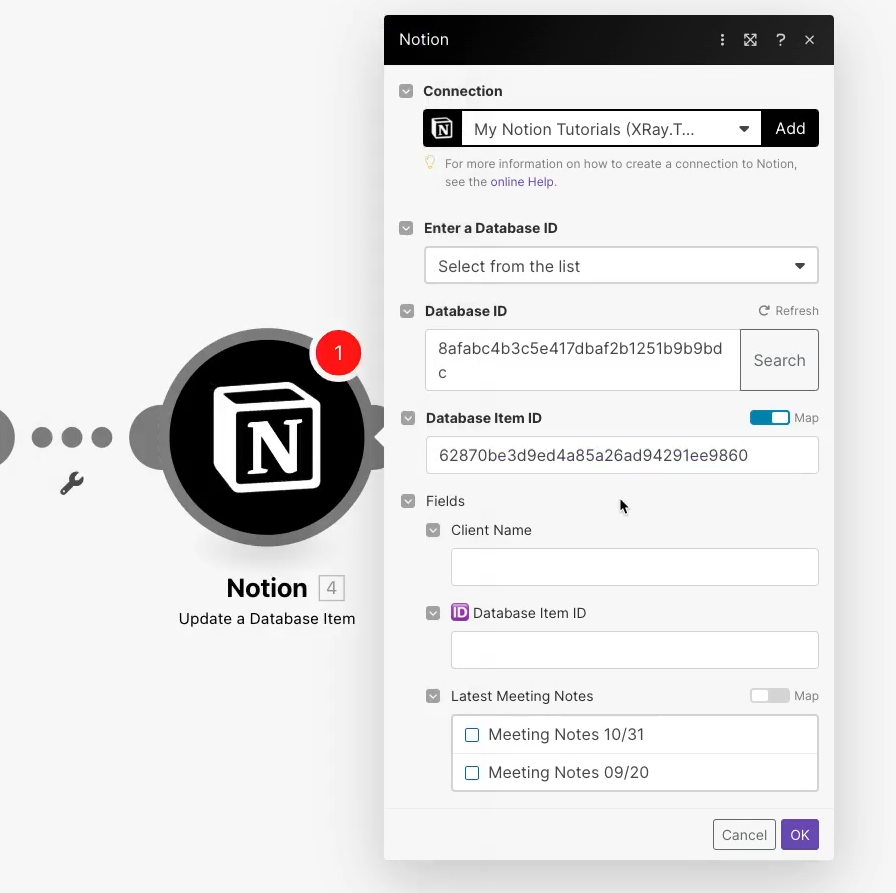
If you leave a property blank, Make will leave that property as-is. If you enter data into a property, Make will overwrite the existing data with whatever you entered.
Since our “Latest Meeting Notes” field is a Relation, we can enter the ID of the meeting notes doc retrieved in our first module.

This will replace the current relation to last week’s meeting doc with a relation to this week’s meeting doc. We’ll leave all of the other fields blank to leave them as they are.
Adding a filter after the trigger
Before we can test the scenario, we just need to add a filter after the trigger module. The filter will make sure that this module only runs for the “FakeCo” client.
We’ll set it so the “Name” of the “Clients” property must be equal to “FakeCo.”
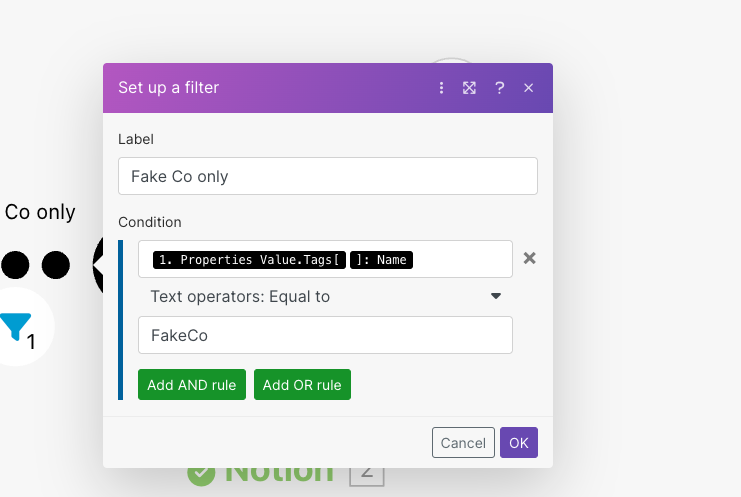
Now that we’ve added the filter, we’re ready to test the scenario.
And we can see that the record has been updated with a relation to the latest meeting notes doc.
Keep your databases current automatically
Updating Notion databases with Make is pretty simple. All you need is the right IDs, and you can update any records you want automatically.
If you’d like more no-code tips and tutorials, check out our blog or our YouTube channel. You can also follow XRay on Twitter, Facebook, or LinkedIn.





